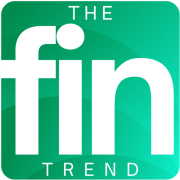What’s Driving Homeowners Insurance Costs in 2025
The homeowners insurance market is facing one of the most challenging phases in recent history, transforming what was once a predictable segment grounded in statistical and historical models.

According to data from the National Association of Insurance Commissioners (NAIC), the average annual homeowners insurance premium in the U.S. rose 23% between 2021 and 2024, with new projections indicating an additional 8% to 12% increase in 2025 alone.
All of this creates a scenario that demands special attention.
The Economic Impact of Natural Disasters
The first source of pressure on the industry is the increasing frequency of natural disasters.
More intense hurricanes, larger wildfires, and increasingly destructive hailstorms are altering insurers’ actuarial balance sheets.
According to the National Oceanic and Atmospheric Administration (NOAA), the U.S. recorded 25 climate events causing losses of over $1 billion in 2024—the highest number in the historical series.
This rise in claims has driven up reinsurance costs, which have in turn been passed on to end consumers.
Reconstruction Inflation and Replacement Costs
Beyond climate risks, the sector continues to face persistent inflation in construction materials and labor costs.
Following the COVID-19 pandemic, prices for lumber, steel, concrete, and electrical components rose sharply.
Between 2020 and 2024, the Construction Cost Index (CCI) jumped by more than 35%, pressuring replacement costs—a central parameter in homeowners insurance pricing.
Even as global supply chains normalize, costs remain high due to structural labor shortages in the construction industry.
Insurer Retraction and Market Concentration
Another critical feature of the 2025 landscape is the reduction of competition in high-risk markets.
Major insurers—including State Farm, Allstate, and Farmers Insurance—have already limited or suspended the issuance of new policies in states like California and Florida, citing the financial unviability caused by escalating claims costs.
This movement has triggered a coverage crisis: with fewer players willing to assume risk, many homeowners are turning to state-backed last-resort plans, such as Citizens Property Insurance Corporation.
Market concentration also increases systemic risk: a large-scale catastrophe could cause regional fiscal imbalances and even impact the mortgage market, since home loans require insurance coverage to remain valid.
The Regulatory Dimension and the Role of the State
The Federal Insurance Office (FIO), part of the U.S. Department of the Treasury, published a 2024 report calling for standardized climate risk metrics across insurers and the creation of a national climate loss database.
However, the fragmented regulatory system—with primary authority at the state level—makes a coordinated response difficult.
Insurance economists argue that the current model fails to properly internalize climate risks, creating distorted incentives.
Technology, AI, and Predictive Pricing
Despite the adverse environment, there are signs of technological transformation in the industry.
The use of artificial intelligence, satellite imagery, and big data is reshaping risk assessment and policy pricing.
Companies like Hippo, Lemonade, and Kin Insurance are leading the way in adopting predictive models capable of estimating potential damages based on microclimate data and property maintenance patterns.
This approach enables more dynamic and personalized pricing, reducing cross-subsidies and, in theory, making the system more efficient.
However, widespread adoption of these technologies also raises ethical and regulatory concerns.
AI models can reproduce geographical and socioeconomic biases, unfairly penalizing historically vulnerable communities.
The Challenge of Financial Sustainability
In the long run, the central dilemma of the U.S. homeowners insurance market is economic and structural: how to maintain system solvency in an environment of rising risk?
The solution lies on three fronts: adequate repricing, risk mitigation, and structural market reform.
There is also growing pressure for the insurance industry to integrate financial and environmental sustainability metrics (ESG) into its portfolios.
Global institutional investors and reinsurers already demand transparency on climate risks and emission-reduction commitments, aligning homeowners insurance with the broader sustainable finance agenda.
Conclusion: A System in Transition
The rise in premiums is not merely a financial phenomenon—it is the symptom of a deeper transformation: the repricing of risk in an era of climate uncertainty and structural inflation.
The trajectory of the sector in the coming years will depend on its ability to balance solvency, affordability, and distributive fairness.
